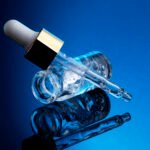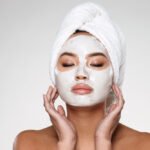Dealing with an itchy or flaky scalp can be bothersome, but understanding whether it’s due to dryness or dandruff is crucial for choosing the right treatment. Dry scalp and dandruff may share some common symptoms, but they stem from different causes and require different approaches for relief. Let’s delve into the distinctions between dry scalp and dandruff and explore effective solutions for each.
Differentiating Dry Scalp and Dandruff:
Dry Scalp:
Symptoms:
Itching, tightness, and small, white flakes are common indicators of a dry scalp. The flakes are generally smaller and drier compared to dandruff.
Causes:
Environmental factors, such as cold weather, low humidity, or excessive washing with harsh shampoos, can strip the scalp of its natural oils, leading to dryness.
Appearance:
Flakes from a dry scalp are often loosely scattered, and the scalp may appear dry and tight.
Dandruff:
Symptoms:
Dandruff is characterized by larger, yellow or white flakes that are often oily. Persistent itching is a common symptom.
Causes:
An overgrowth of a yeast-like fungus called Malassezia on the scalp is a primary cause of dandruff. Other factors include hormonal changes, stress, and certain skin conditions.
Appearance:
Dandruff flakes are larger, oilier, and more adherent to the scalp compared to those from a dry scalp.
Effective Solutions for Dry Scalp:
Gentle Shampooing:
- Use a mild, moisturizing shampoo to avoid stripping natural oils.
- Shampoo less frequently, especially in dry or cold weather.
Scalp Massage:
- Gently massage your scalp with your fingertips to stimulate natural oil production.
- Consider using a few drops of a hydrating oil, such as jojoba or coconut oil, and massage it into the scalp before washing.
Hydrating Conditioner:
- Use a hydrating conditioner to nourish the scalp and prevent dryness.
- Choose products with ingredients like aloe vera, glycerin, or hyaluronic acid.
Effective Solutions for Dandruff:
Anti-Dandruff Shampoos:
- Look for shampoos containing active ingredients like ketoconazole, selenium sulfide, or pyrithione zinc.
- Use these shampoos regularly to control the growth of the fungus causing dandruff.
Tea Tree Oil:
Tea tree oil has natural antifungal properties. Add a few drops to your shampoo or dilute it with a carrier oil for a soothing scalp treatment.
Apple Cider Vinegar Rinse:
Mix equal parts water and apple cider vinegar and use it as a scalp rinse. This can help balance the scalp’s pH and reduce dandruff.
Preventive Measures for Both:
Balanced Diet:
Ensure your diet includes essential nutrients like vitamins A and E, zinc, and omega-3 fatty acids to promote overall scalp health.
Stay Hydrated:
Drink an adequate amount of water to maintain overall skin hydration, including the scalp.
Stress Management:
Practice stress-reducing activities like yoga, meditation, or deep breathing to minimize triggers for both dry scalp and dandruff.
By understanding the nuances between dry scalp and dandruff is the first step toward effective management. Tailor your approach based on the specific symptoms and causes. If symptoms persist or worsen, it’s advisable to seek advice from a dermatologist or healthcare professional to ensure proper diagnosis and treatment. With the right care, you can achieve a healthy and comfortable scalp, free from the irritation of dryness or dandruff.
Image credits : Image by Freepik








No Comment! Be the first one.